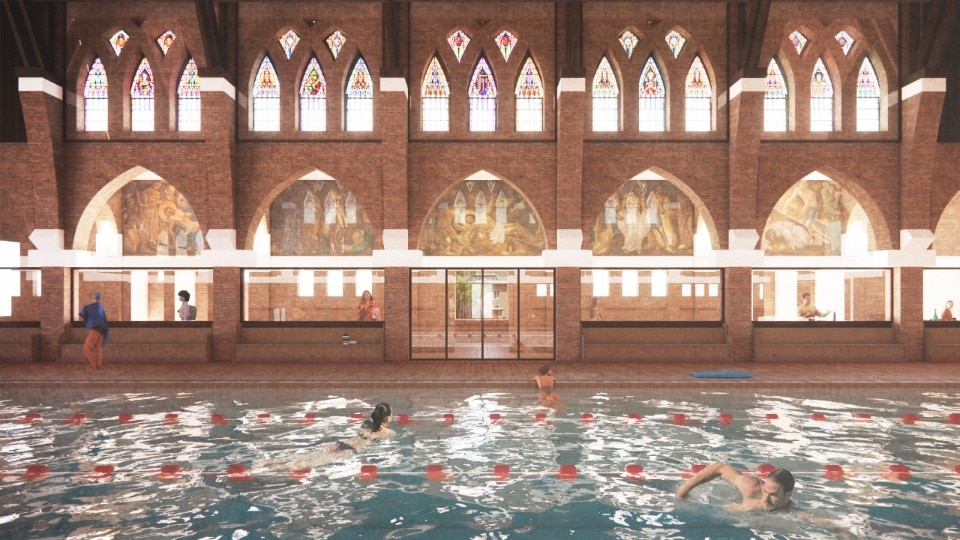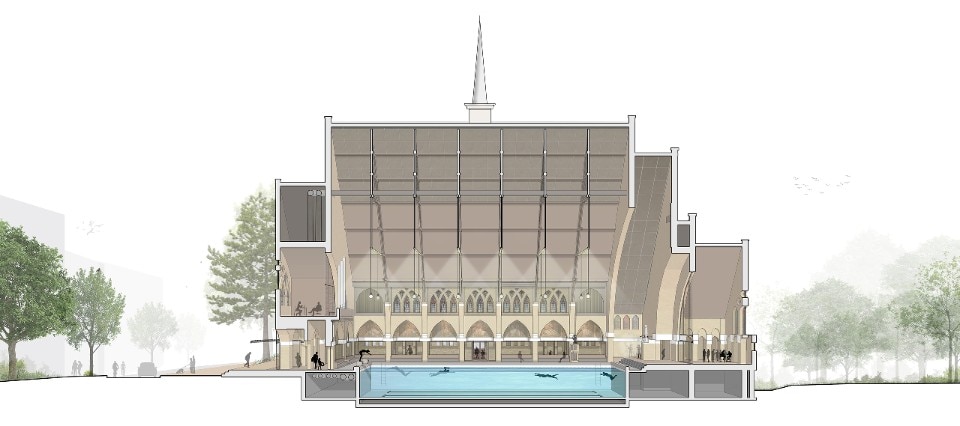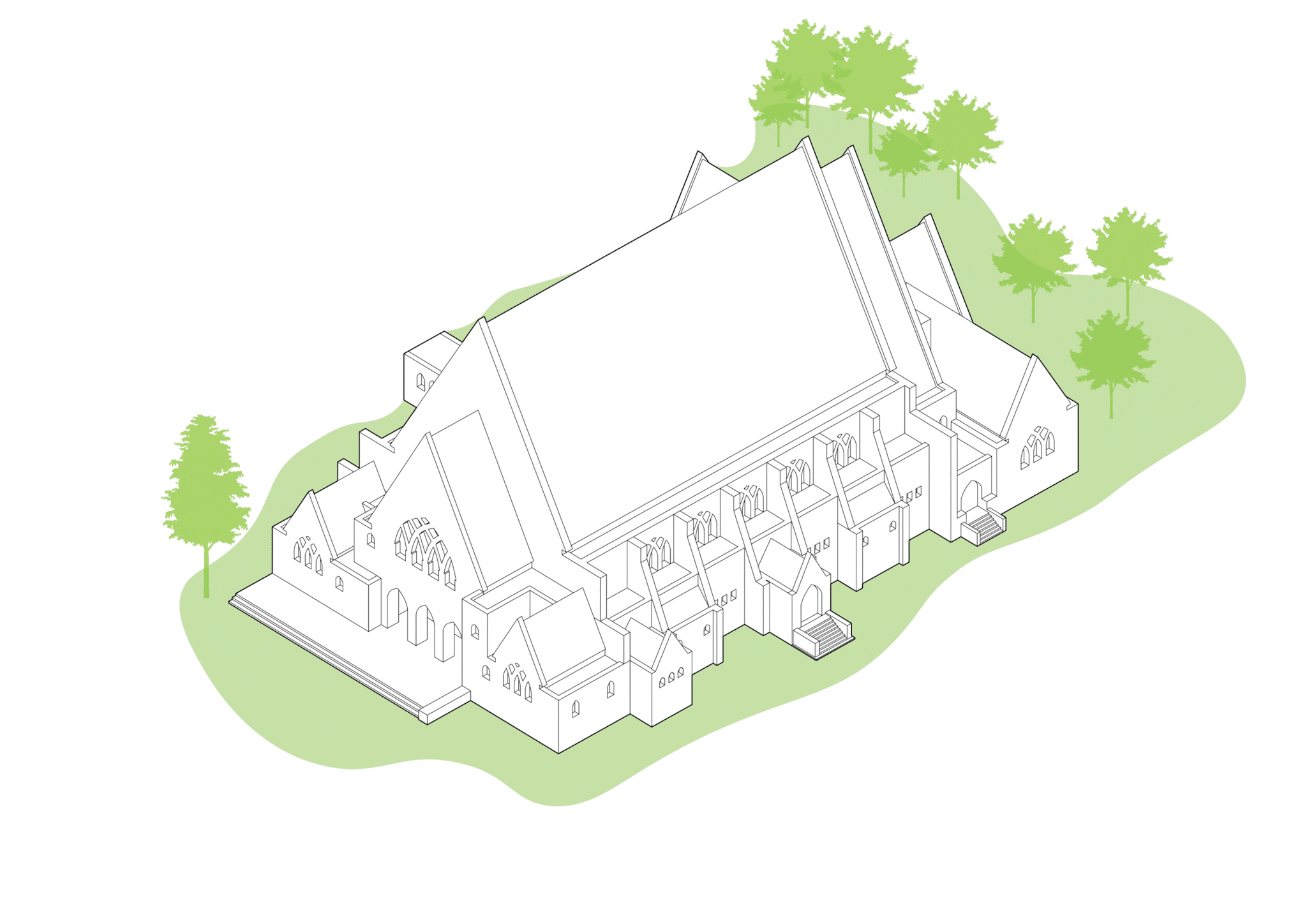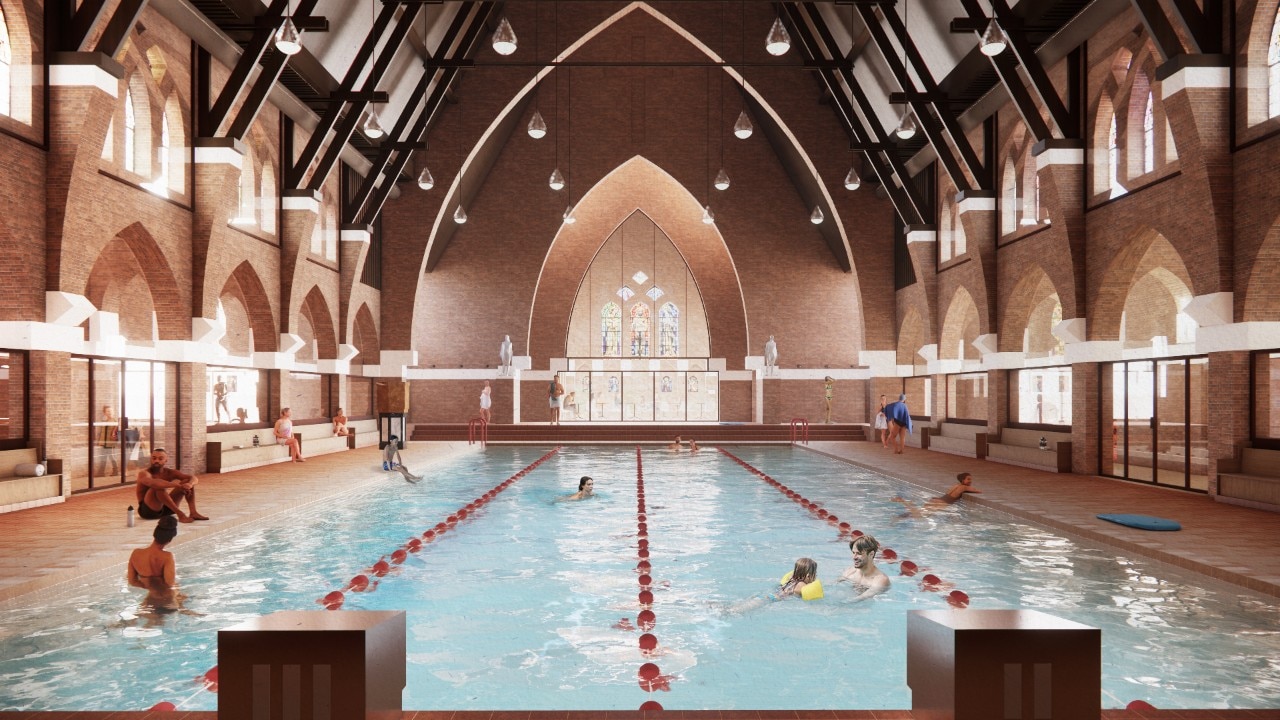“Imagine: swimming the backstroke with a view of a church vault and stained-glass windows” - this is the vision of Winy Maas, founder of MVRDV, the architecture firm that, together with Zecc Architecten, will renovate the St. Francis of Assisi Church in Heerlen, a town on the German border known for its vibrant cultural and artistic scene. Built in 1923 and no longer used for religious purposes, the church will be converted into a public swimming pool.

At the heart of the project, which at first glance may seem bold or irreverent, is the flexibility of the interior space, which can be reconfigured according to its intended use. The current floor of the main nave will be removed and replaced by a horizontal structure that can be adjusted to three different levels: when fully lowered, it holds a pool of water and functions as a swimming pool; when raised to floor level, it becomes a venue for public events; and when slightly lowered, it can be covered with a thin layer of water, creating a reflective surface that mirrors the existing architecture.

As well as the playful and unconventional approach - with the lifeguard replacing the priest at the pulpit and the side aisles repurposed as bars and changing rooms - there is also a clear desire to preserve and reuse the sacred elements of the original building. For example, the pews will be integrated into the new glass walls surrounding the pool, becoming seating for swimmers.
But why a swimming pool? “The vacancy rate of churches is increasing, so we need to come up with new, creative ideas for what we can do with these buildings. Why not give these churches a social function again, as they used to have? A public swimming pool is ideally suited for this.” says Winy Maas, who recently spoke to Domus about another of the studio's projects in the Netherlands, Portlantis.

Local artists will create a mosaic inspired by the original colours and aesthetics of the church, which will cover the raised floor and pool area. Meanwhile, the lighting will reflect the church's original lamps, reconstructed by the designers using historic photographs of the space, and will also be used to mark the swimming lanes.
From a technical point of view, the project also tackles a major challenge: climate control without compromising the historic elements. The roof will be insulated on the outside to preserve the interior aesthetics, and the technical systems will be hidden in the basement. The new glass walls around the pool will act as thermal buffers, protecting the stained glass windows and original artwork from moisture.









